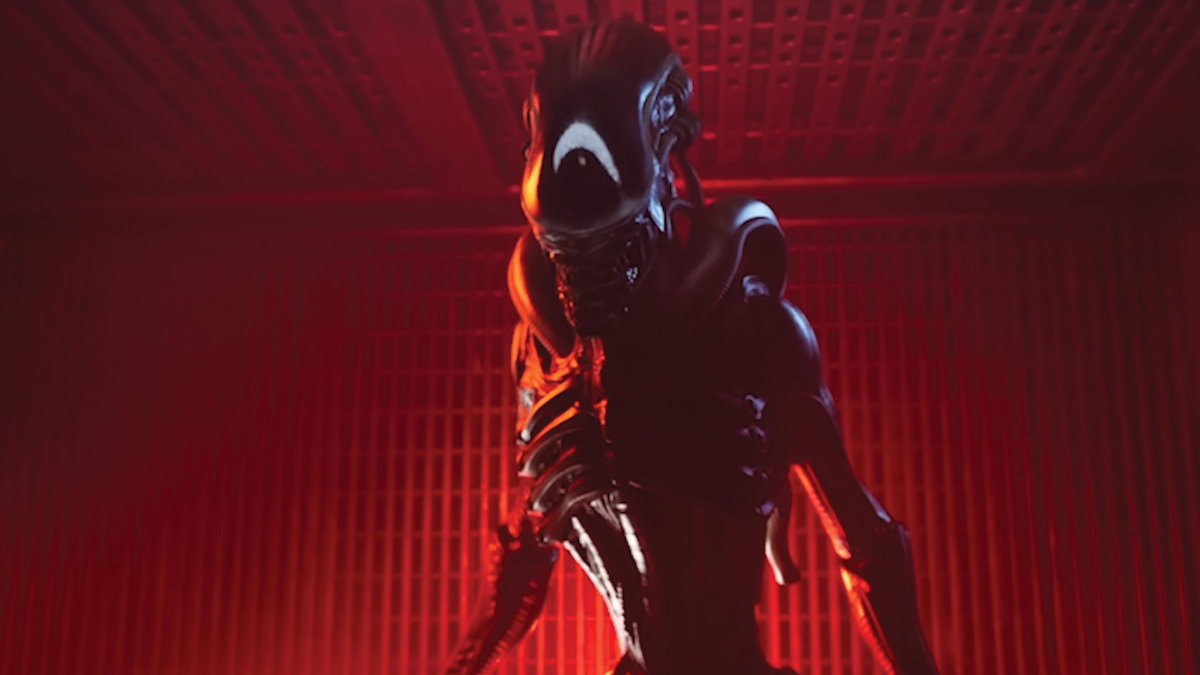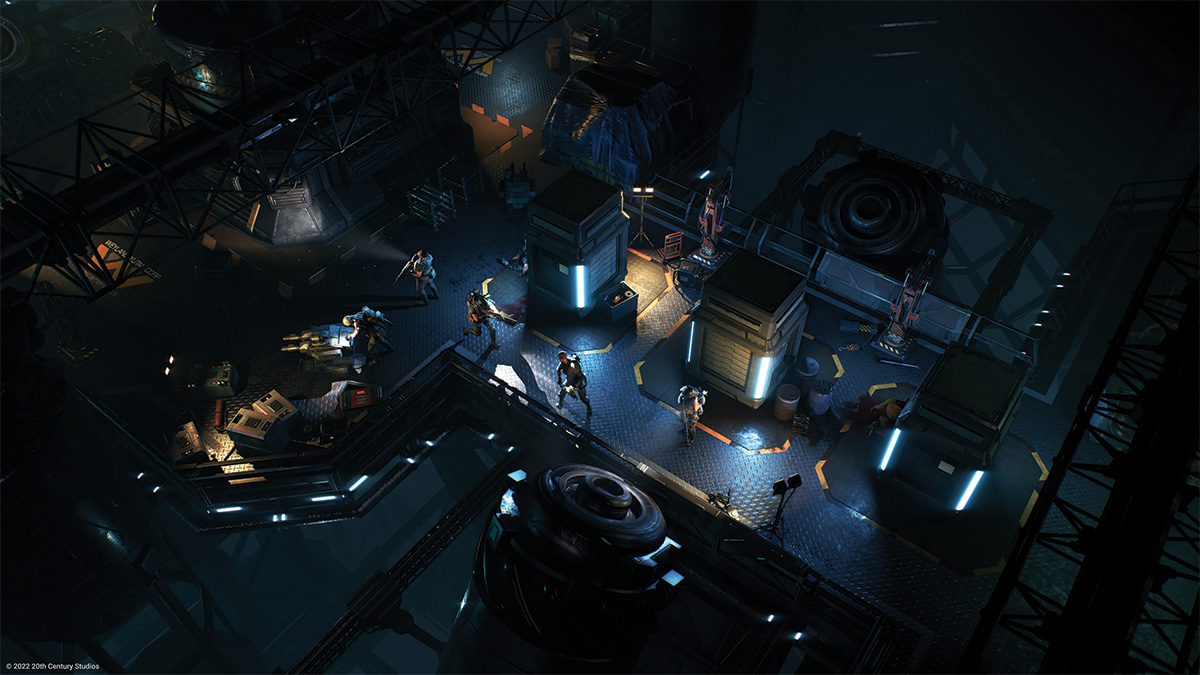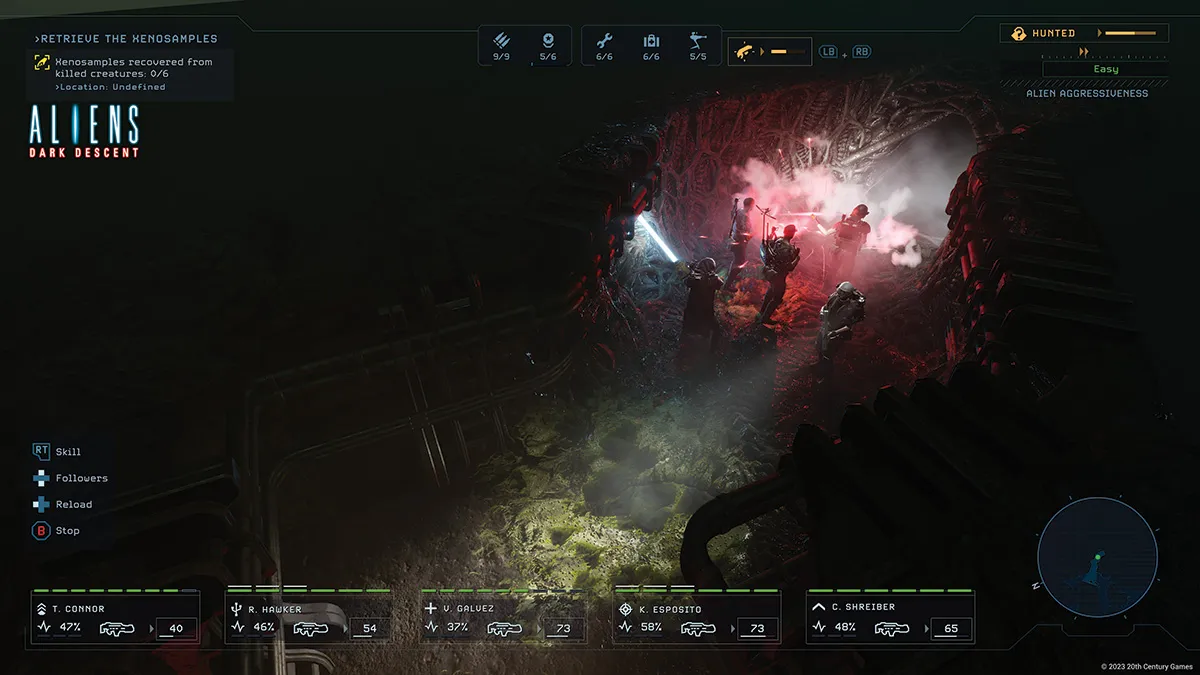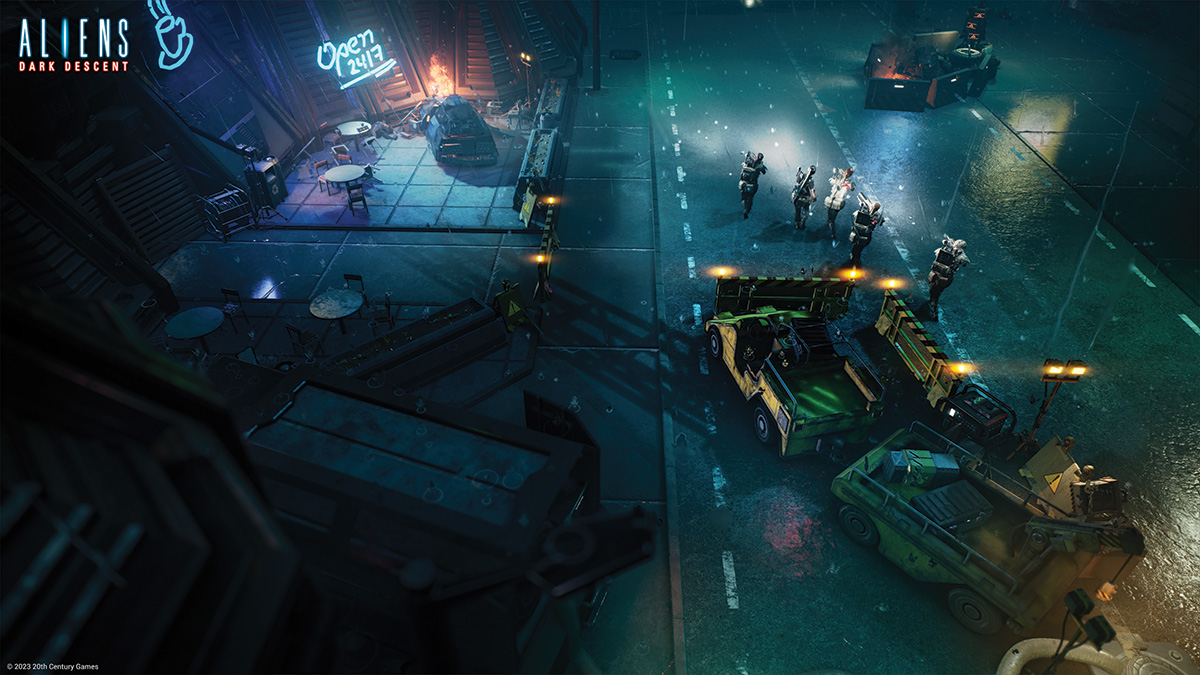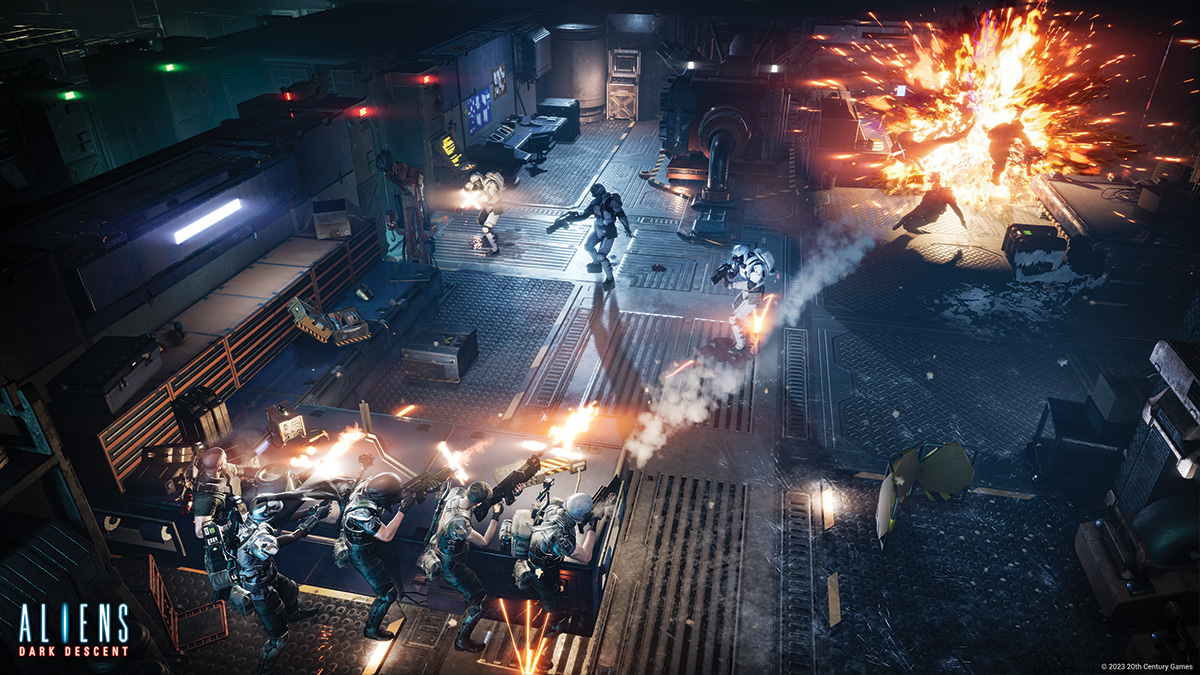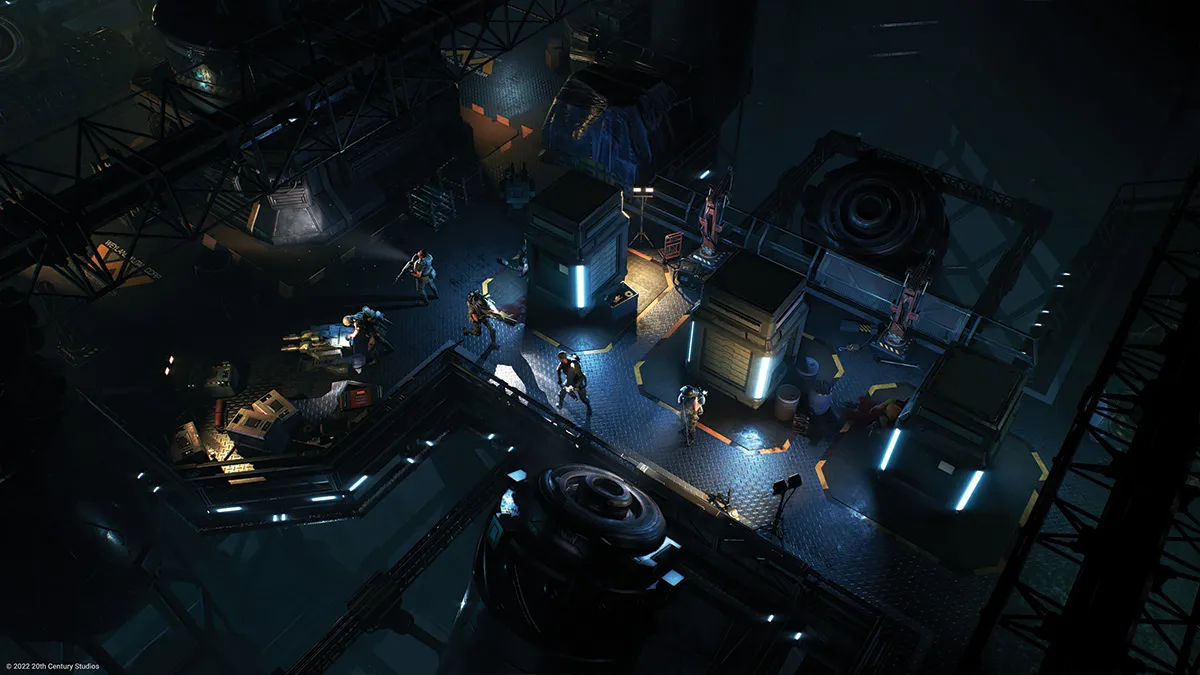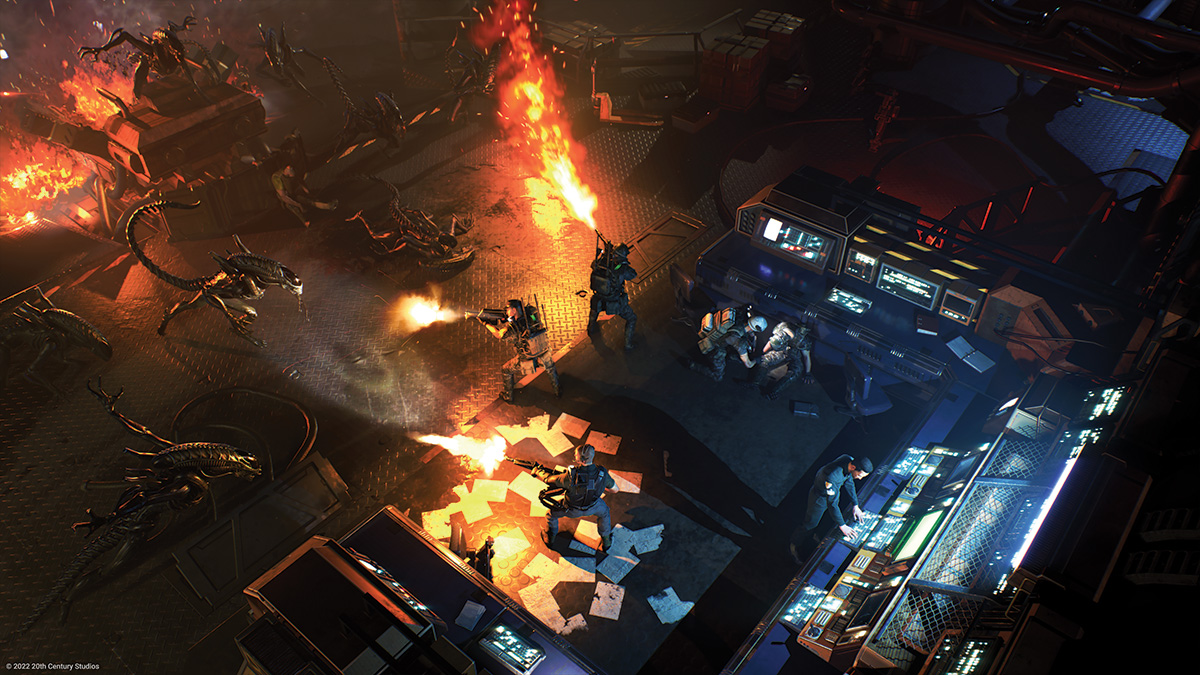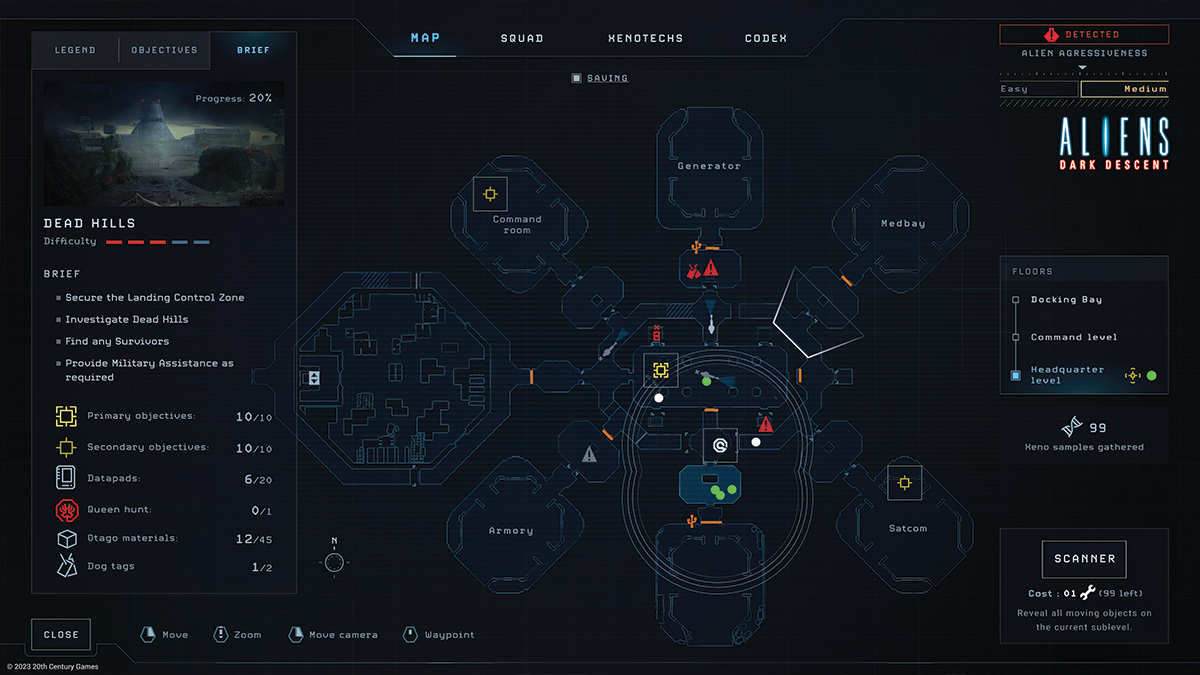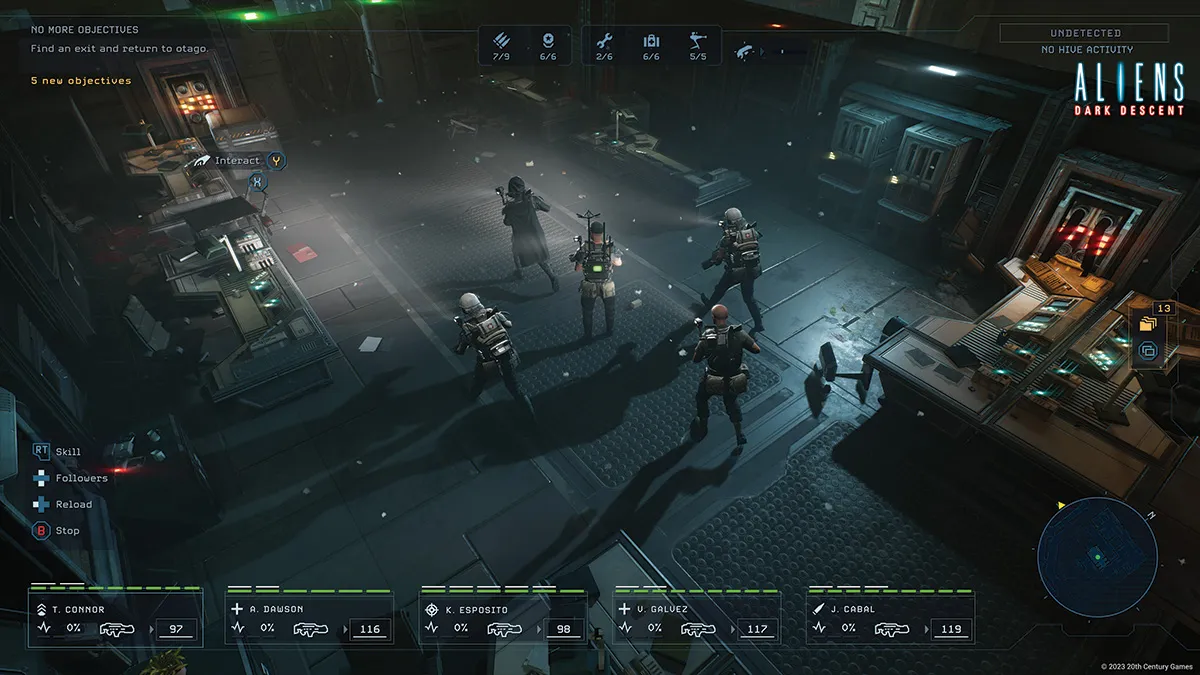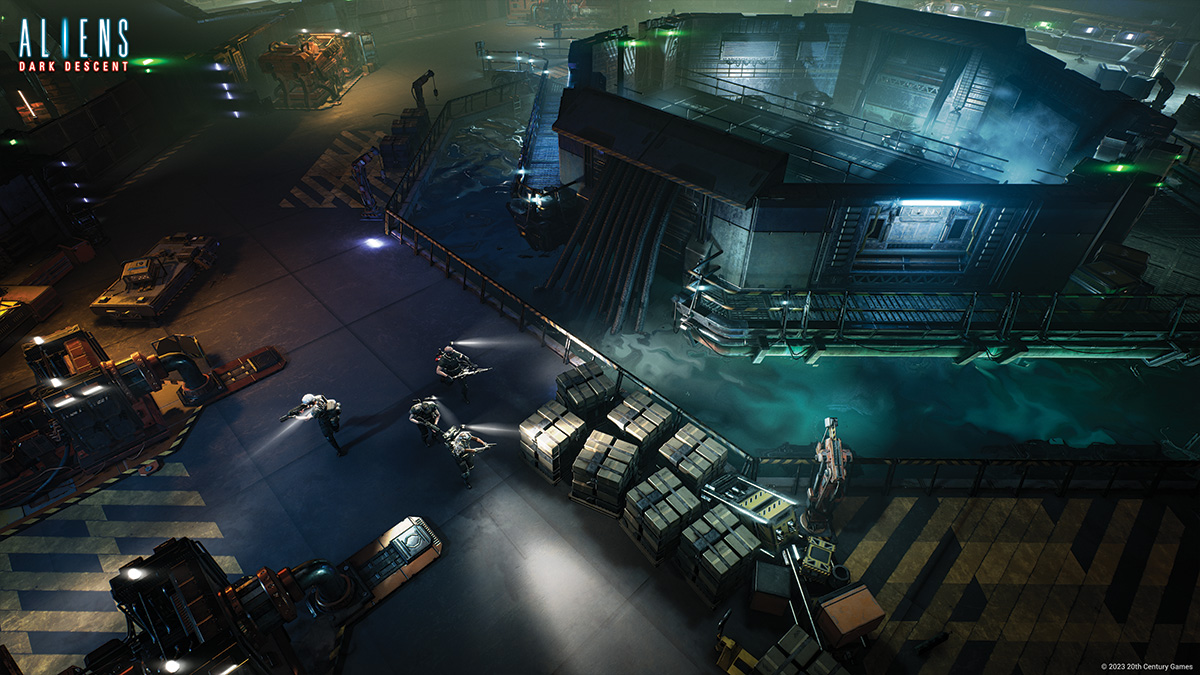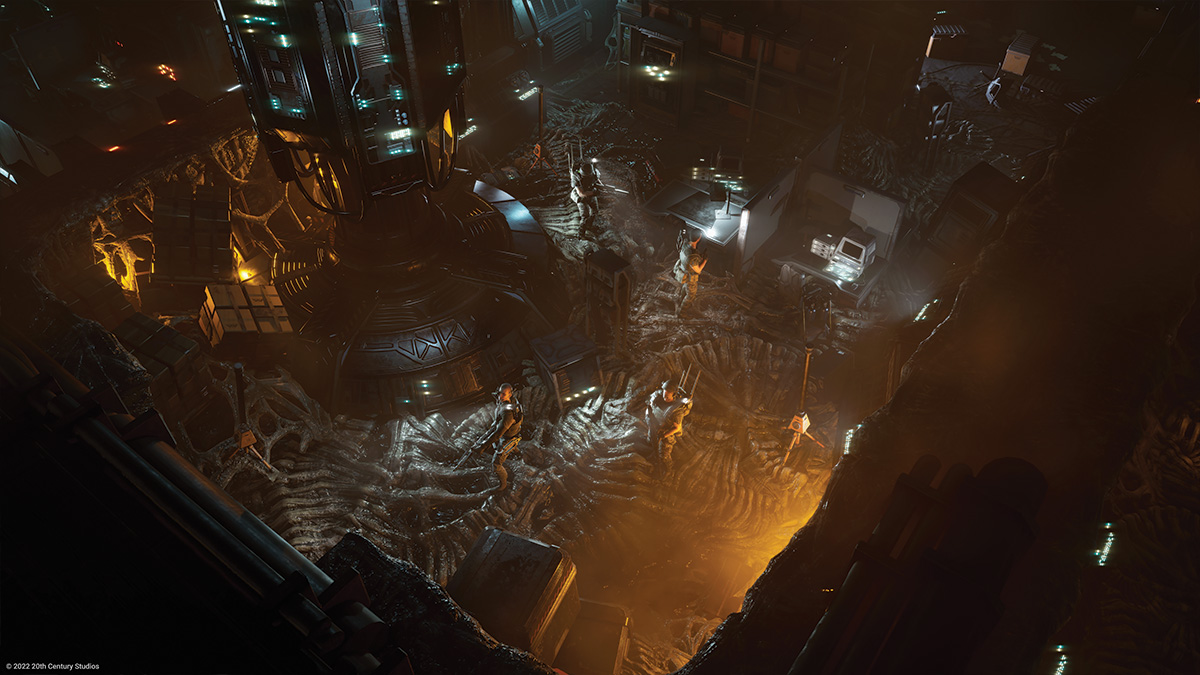There aren’t many horror options in the realm of top-down tactical games. In fact, it’s one of the things that drew me to Aliens: Dark Descent in the first place. It’s an odd combination, to be sure — real-time strategy, as a rule, places you in a seat of omnipotence, where horror does its best to subvert any feeling of control. While it’s not always on the mark with the feeling of dread, Aliens: Dark Descent manages to keep player unease high with ever-increasing stakes and intricate level design that allows for multiple play styles — though it certainly discourages trying to power through the Alien threat.
From the very first cinematic, Aliens: Dark Descent lays out a sense of isolation and dread that harkens back to the classic ‘79 film it drew inspiration from. The premise is simple: The Xenomorph threat has somehow found its way into a shipping port on the planet Lethe. With no other recourse, all ships leaving the planet are downed — including the Otago, a military vessel filled with hardened marines. Trapped on the planet with no working ships, communications, or any idea of the level of threat they face, Sgt. Jonas Harper of the U.S. Colonial Marines and former administrator Maeko Hayes must find a way to save what’s left of their people and prevent the alien menace from escaping the planet and terrorizing the galaxy. In order to do that, however, they need to figure out how all of this started in the first place.
Each mission follows the same general premise. You’ll pick your destination, marines, and gear, then shoot or sneak your way to find the answers you’re looking for. Marines can be customized, and though their customization isn’t incredibly deep, it works well enough — even if I did find that most of them are comically unattractive. There are several presets to choose from, but the most useful (since you rarely see their faces) was the option to select uniform colors. As your marines advance, they learn specialized abilities, so the option to dress snipers in one uniform and your hackers in another ensures that individual units can be instantly recognized by their roles. It’s absolutely imperative to have a diverse team since you never know just what you’re going to encounter during deployment.
When you first discover an area, it utilizes a heavy fog of war. The top-down view allows you to see the exterior of buildings and get a general sense of a town’s layout, but as missions move underground or into space, you’ll need to explore the location manually — you control your marines flashlights for a fun bit of exploration — or find a command center so you can download the area map. Downloading the information requires valuable resources, but it can be well worth the cost if it means knowing where your objective is.
During deployment, you’ll direct your marines with simple point-and-click controls. While their walking speed is painfully slow, running prevents your boys from firing at attackers and increases your likelihood of being spotted by enemies. There are plenty of resources to gather and data pads with information to help flesh out the backstory of each area, but be warned, every movement takes time, and your marines will leave their buddies behind to follow your overarching commands, so make sure not to leave a man behind. Until you find
Marines will automatically engage with enemies once spotted but more tactical responses are entirely up to you. Each marine class allows your men to utilize different weapons and fighting styles. As the story progress, players gain access to more resources to purchase upgraded weapons for more diverse responses to threats. When you dole out commands time moves in slow motion. It’s an invaluable tool when a horde of enemies is crashing against your men. It gives you time to assess the most vulnerable areas and try to mitigate the threat. It’s important to have a balance of close-range and distance attacks to give your marines an edge in battles, and failing to diversify your weapons and abilities is a surefire way to get all of your men killed.
Not only do you have to round out your team’s abilities, but personalities play a factor as well. Marines have bad traits — like Disobedient or Coward — that negatively impact their performance. One of my marines, a Bully, would pick on any marine that was a lower level than himself, meaning he could never be a team lead and was always paired with my high-level soldiers. Much worse are the cowards in the ranks. Aliens are already terrifying for any marine, and cowards hit their max fear much faster. This leads them to make bad decisions in the heat of a battle — and bad decisions get squad members killed.
It’s this intricate team management that keeps Aliens: Dark Decent entertaining long after the Xenomorph attacks become a little humdrum. While the game doesn’t nail the horror, you really feel for your dysfunctional little fellows. My heart doesn’t pound, or my palms sweat, but boy is my brow furrowed. Encounters can be incredibly difficult, and the game will tell you exactly when you’re going into something that could be overwhelming. The first time I encountered one of the second-stage Xenomorphs, I lost my mind for a moment with panic — I disregarded the game’s warning, and my marines were tired, terrified, and more than ready to abort the mission. Needless to say, the alien demolished my little team. Between my fumbling with the controls, the marine’s all-out panic, and my lack of resources, the result was devastating.
After one of my boys went down, the others panicked. So did I. On the retreat, another marine was knocked out, his body stolen by the Xenomorphs. Before I even realized what was happening there were only two left. Then there was one. I returned to the ship and realized my ranks were too wiped out to run another mission. Luckily, the normal difficulty mode gives players multiple loads to return to, so it’s easy to roll back and save your little buddies — sometimes. As you progress, your options to easily recover your marines dwindle down to nothing. Loss becomes inevitable, so make sure you conserve where you can. It’s hard to come back from losing one of your best soldiers, and you’ll rarely get away with losing just one, especially in the later levels where your ARC transport (essentially a super tank) can’t provide backup.
Outside of running missions, there’s a lot of (simple) base management waiting for you onboard the Otago. Marines that are hurt spend days in the infirmary, and the more rescued doctors you have, the faster they’ll recover. Likewise, their mental health can be recovered in a psychiatric facility over the course of a few days. This becomes imperative as their traumas build up, making them unruly and unmanageable. Players can use Xenomorph DNA to upgrade their soldiers, and scavenged materials can be used to make more powerful weapons. But, every day that passes ups the infestation level, meaning more aliens to avoid and more terror for your marines.
I never quite managed to use stealth to my full advantage, despite both my best efforts and the UI clearly indicating when I was about to be spotted. There were times I could wind my way through the infested facilities, but I never managed to avoid waking the beasties. Once discovered, the aliens hunt your marines down, compounding their stress astronomically until you lose your pursuers, or retreat to the Otago. Aliens aren’t the only enemies you’ll encounter. The Xenomorphs have human cultists who worship them, and as you get deeper into the story, more heavily armed humans really start to apply pressure — setting traps, closing doors, and using weapons against you. Engaging with humans leads to no small amount of micromanaging, with most of it centering on simply having your marines cycle between crouching and firing. Your soldiers won’t shoot if they’re in cover, but leaving your marines exposed while being shot at leads to certain death.
With aliens, micromanaging is much more seamless. They move so quickly that you’ll want to keep time slowed so you can switch between weapons that put some space between you and your enemies (like turrets, mines, and impassable walls of flame from flamethrowers), and your short-ranged alien exploding shotguns and revolvers. Fighting humans is more tedious, especially since you don’t want to use some of your better weapons on them, lest a Xenomorph hears the commotion and joins the fray. Wasting your command points on humans leaves you exposed to real threats.
I’ll take this small amount of tedium any day, but Aliens: Dark Descent has much worse problems. Throughout my playthroughs, I encountered a litany of glitches, ranging from the forgivable — like broken and flickering animations, respawning collectibles, and T-posed dead aliens — to much more egregious problems like crashes and game-breaking bugs. In my first attempted playthrough, the game failed to mark an objective as completed and move on to the next. I searched for hours trying to figure out what survivor I had missed. When I realized it was a bug, my autosave files didn’t go back far enough for me to recover the game, forcing me to restart. It happened again almost 15 hours in, and while I was able to roll back my save, I consequently lost all of my hard-fought resources.
Aliens: Dark Descent is an excellent real-time strategy game that will test your patience and your strategic mastery. Level design is comprehensive and varied, allowing players to tackle problems however they see fit. On its easiest setting, it puts players in neigh unwinnable situations, while its hardest is a nightmare scenario on par with Ripley’s traumatic encounters with the original critter. The all-new story touches on lore that Alien fans will delight over, even if the story is only so-so. To be fair, I didn’t get the chance to finish the main campaign in time for this review with all my setbacks, so the payoff could be incredible.
Unfortunately, those game-breaking bugs almost ruined this one for me. I can’t remember the last time a game broke this badly on me — let alone twice. Despite the fun I had with Aliens: Dark Descent, it gets a low score from me. I advise would-be players to give this one a month or two and wait for some critical patches and bug fixes before giving it a go. If you can’t wait, keep an eye on your objective markers and make sure to let your marines rest frequently so you always know you have a safe save to return to.
This review is based on the PC version of the game. A copy was provided by Focus Entertainment.

